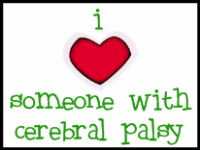At first my husband and I considered adding on an addition. We also considered velvet throws. Velvet throws were my mother-in-law's suggestion to cover up the DME and any other daily detritus that couldn't be picked up, swept away, flushed or otherwise disposed of out of sight, but in a manner, of course, that seemed purposeful and aesthetically pleasing. She had learned this trick as a young girl, it seems, when she used to visit an elderly neighbor who lived in a Queen Anne Victorian mansion. The mansion had been built by the old woman's forebears who were railroad magnates, and boasted 10,000 daffodils blooming on the lawn every Spring (and in the Winter, gaily colored rags tied on to the deciduous bushes banking her driveway to "punch up" the appearance of pale skies overhead). Anyhow, the house staff had a multitude of velvet throws -- ruby red, terullian purple, gold -- and spread them about purposefully to tidy up the place for guests, recounts my mother-in-law with laughter.
For us, it's "oNay" ("No" in Pig Latin) on the throws. For now, we're thinking of what changes we need to consider to make our living space more workable -- changes designed specifically for Sarah and her Daddy, too, to ensure that we end up with the features that we must have (and, hopefully, can afford) for the future. It may be just easier to move. While we are fortunate now to have one-floor living in a ranch-style house, its footprint on our property is a big limiting factor, making it either too difficult or prohibitively expensive to adapt. Yes, we could add on a floor and a two-story home can certainly be made wheelchair accessible, but the space and money required to install an elevator is not something we have.
Yesterday, the kids and I checked out a nearby property where the house was delapidated and the seller anticipates its being torn down and a new one built. I looked at it with pictures in mind of different architectural plans drawn specifically for people with disabilities in mind. Unfortunately, the lot, while it was in a very desirable neighborhood, did not support any of them. So, we will keep looking, I guess. I should say that, while cramped, our rancher is fortunately what architects call "visitable" -- a term meaning that our house meets three design criteria:
For us, it's "oNay" ("No" in Pig Latin) on the throws. For now, we're thinking of what changes we need to consider to make our living space more workable -- changes designed specifically for Sarah and her Daddy, too, to ensure that we end up with the features that we must have (and, hopefully, can afford) for the future. It may be just easier to move. While we are fortunate now to have one-floor living in a ranch-style house, its footprint on our property is a big limiting factor, making it either too difficult or prohibitively expensive to adapt. Yes, we could add on a floor and a two-story home can certainly be made wheelchair accessible, but the space and money required to install an elevator is not something we have.
Yesterday, the kids and I checked out a nearby property where the house was delapidated and the seller anticipates its being torn down and a new one built. I looked at it with pictures in mind of different architectural plans drawn specifically for people with disabilities in mind. Unfortunately, the lot, while it was in a very desirable neighborhood, did not support any of them. So, we will keep looking, I guess. I should say that, while cramped, our rancher is fortunately what architects call "visitable" -- a term meaning that our house meets three design criteria:
- a zero-step entrance,
- doors with 32-35 inches of clear passage space, and
- one bathroom on the main floor with wheelchair access.
We also have an open floorplan in the main living areas that allows a bit more ease for a person who uses a wheelchair or walker to negotiate. (Let's see -- that's Sarah, Daddy, Nana Anne, Great Grandma, and a cast of family and friends at various times in recovery from running injuries, knee replacement, therapy for pelvic instability, and more.) What we're shooting for, though, is what is called "Universal Design" where even more architectural features are standard, with a vision of creating a barrier-free, "lifetime home" that allows it always to remain functional.
Heading home, we packed it in and stopped by Nana Anne's to enjoy her pond and geese. The Fall colors don't get better than this!













0 comments:
Post a Comment